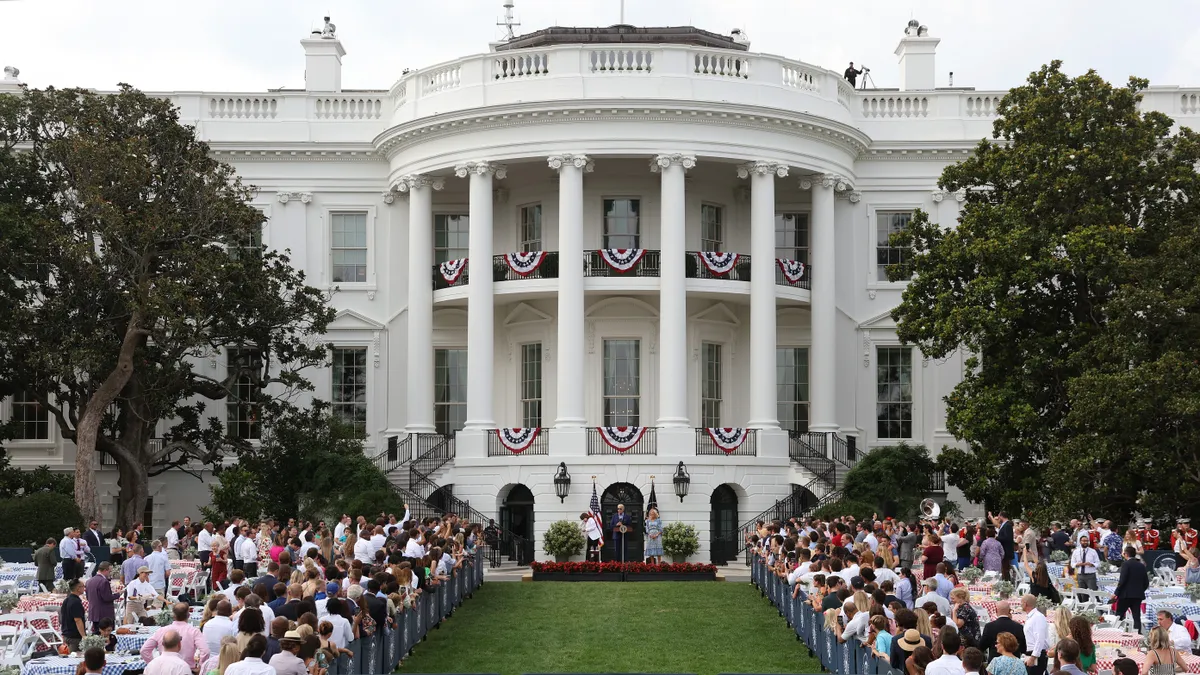The Department of Commerce’s National Telecommunications and Information Administration launched a request for comment Wednesday on the benefits — and risks — of widely available foundation AI models to inform potential policy recommendations.
“It’s clear to the experts that this is not a binary issue,” said Alan Davidson, assistant secretary of commerce for communications and information and NTIA administrator. “There are gradients of openness and that will be something we will be exploring as we move forward and try to find solutions that promote innovation and safety.”
NTIA does not have regulatory authority, but its report could assist lawmakers in knowing where to draw the line. The agency plans to look into the availability of model weights and compare to the risks and benefits associated with closed models. Open-weight models allow developers to build upon and adapt previous work.
Widely available foundation models have benefits, Davidson said. They have the potential to expand access to small businesses and startups, and they provide technical and security experts with greater transparency. But there are drawbacks.
“The reason we’re having this inquiry is because early conversations around AI openness and open foundation models have engendered fear about making the most advanced models widely available without adequate restrictions or safeguards against misuse,” said Davidson.
The request for comment will close in mid-to-late March and was directed by the White House’s AI-focused executive order.
The executive order on AI was met with praise upon its announcement in October. Tech vendors and industry watchers characterized it as a positive step toward curbing AI-related risks, though other stakeholders raised questions about its implementation.
So far, agencies have used the Defense Production Act to “compel” developers of the most powerful AI systems to report vital information, including safety test results to the Department of Commerce. The department proposed a draft rule that would make U.S. cloud companies that support foreign AI training to tell the agency, according to the Biden-Harris administration. Nine agencies completed risk assessments on AI’s use in critical infrastructure.
The White House is taking aggressive steps to curb risks and harness the potential of generative AI, but industry watchers are still waiting for bipartisan legislation.
Senate Majority Leader Chuck Schumer, D-N.Y., held a series of AI insight forums with stakeholders in the fall after unveiling a legislative framework for the technology. The insight forums were meant to serve as a launching pad for regulatory action by educating leaders on the risks and impacts of AI, aiming to go deeper than the typical subcommittee hearing process.
Schumer has been one of the most outspoken voices on AI on the Hill since ChatGPT’s public release, calling for swift congressional action as the technology rapidly evolves. Though, others have picked up the baton as well.
Speaker Mike Johnson, R-La., and Minority Leader Hakeem Jeffries, D-N.Y., appointed 24 members to a dedicated bipartisan task force on AI Tuesday. The task force’s goal is to study guardrails to protect against potential threats and explore how Congress can help U.S. AI innovation.
The task force is led by Reps. Jay Obernolte, R-Calif., the only serving member of Congress with a graduate-level AI degree, and Ted Lieu, D-Calif. and one of four members with a computer science degree.
“As a recovering computer science major, I know this will not be an easy or quick or one-time task, but I believe Congress has an essential role to play in the future of AI,” Lieu said in a statement. “I have been heartened to see so many members of Congress of all political persuasions agree.”
While governing agencies and regulators work to craft U.S. policy on AI, global entities are wrestling with a similar process.
The European Union inched closer to enacting its landmark AI Act in recent months after reaching an initial agreement in December. The proposed EU AI Act will become law once the Council, which includes the 27 EU member states, and the European Parliament agree on a common version of the text.






















